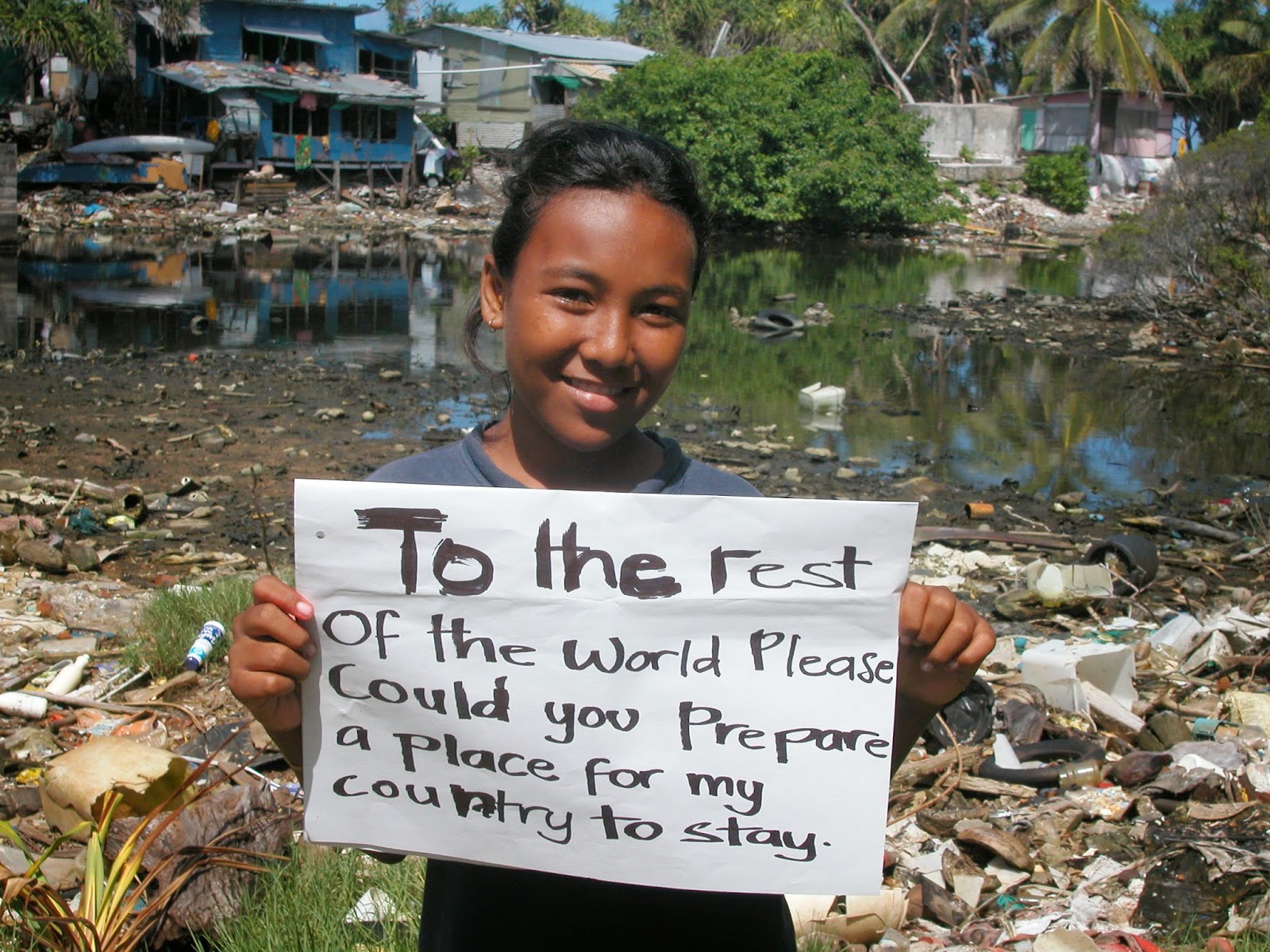In this post I’m going to address all those wannabe
Atlantises out there – the Drowning Islands. These are the very low altitude
islands for whose residents moving to higher land is just not an option. The
islands' very existence is threatened by rising sea level. As Hugh Grant said in
About a Boy ‘No man is an island’, and in this instance, that is probably a
good thing.
 |
| A cabinet meeting held underwater in the Maldives to raise awareness about rising sea levels (TheTelegraph). |
There are many islands in our tropical oceans that may have
to contemplate extinction in the future, but the tiny nation of Tuvalu is perhaps
one of the saddest examples. By building airport runways with surrounding coral,
we have damaged the reefs and aquifers. Construction of piers changed the wave
pattern so that less sand is deposited on the beaches. Seawater is bubbling up
through the aquifers onto the island, the islands are gradually eroding, and on
top of this sea level has risen on average 2mm yr-1 over the period 1950 - 2001 (Church et al, 2006). The problem is exacerbated by increasing frequency of storm surges (Mimura, 1999), and the effects of phenomena such as ENSO, and the Asian-Australian Monsoon.
In 2003, the Tuvaluan Prime Minister compared the sea level rise they are experiencing to 'a slow and insidious form of terroism', and earlier this year the present PM compared it to a 'weapon of mass destruction' So what are the Tuvaluan people doing to save their home? Is there
any way to adapt?
Mimura (1999) looked into the vulnerability of islands such as Tuvalu, in the the South Pacific. He pointed out the importance of natural barriers such as reef systems, mangroves and sandy beaches for protecting islands from rising sea level. Natural barriers are important because they can reduce erosion along the coast and absorb some of the wave energy before it reaches the settlements. But sea level is increasing too fast for coral to keep up and increasing ocean temperatures have led to coral bleaching destroying the natural defence they provide . Tuvaluans have tried planting trees along the coast lines to create natural barriers, but their efficacy has yet to be proved (NAPA).
Several other more man-made solutions have also been tried, such as building sea walls and Tuvalu's National Adaptation Programme of Action have suggested creating concrete current breakers between the atolls to decrease current speed and reduce erosion on the islands. The islands are also trying to grow crops that are happy in saline conditions, and are collecting and storing more rainwater now that groundwater is no longer drinkable.
These are clearly only temporary measures, Tuvalu is poor - much of the national income is from renting out the internet domain .tv to television companies, and even rich countries can't hold back the sea forever. Sea level is forecast to rise during this century, and with an average elevation of just 1.8 metres, Tuvalu may have to look into evacuating it's population. Even without the effects of anthropogenic sea level rise, there is nothing to say that these islands would be safe from sea level rise. However it does seem unfair that it is often the poorest communities, with little contribution to global GHG emissions will be the first to suffer from sea level change.
Mimura (1999) looked into the vulnerability of islands such as Tuvalu, in the the South Pacific. He pointed out the importance of natural barriers such as reef systems, mangroves and sandy beaches for protecting islands from rising sea level. Natural barriers are important because they can reduce erosion along the coast and absorb some of the wave energy before it reaches the settlements. But sea level is increasing too fast for coral to keep up and increasing ocean temperatures have led to coral bleaching destroying the natural defence they provide . Tuvaluans have tried planting trees along the coast lines to create natural barriers, but their efficacy has yet to be proved (NAPA).
Several other more man-made solutions have also been tried, such as building sea walls and Tuvalu's National Adaptation Programme of Action have suggested creating concrete current breakers between the atolls to decrease current speed and reduce erosion on the islands. The islands are also trying to grow crops that are happy in saline conditions, and are collecting and storing more rainwater now that groundwater is no longer drinkable.
These are clearly only temporary measures, Tuvalu is poor - much of the national income is from renting out the internet domain .tv to television companies, and even rich countries can't hold back the sea forever. Sea level is forecast to rise during this century, and with an average elevation of just 1.8 metres, Tuvalu may have to look into evacuating it's population. Even without the effects of anthropogenic sea level rise, there is nothing to say that these islands would be safe from sea level rise. However it does seem unfair that it is often the poorest communities, with little contribution to global GHG emissions will be the first to suffer from sea level change.
 |
| One day it might be necessary for Tuvaluans to leave their home (Coolheadsforahotplanet) |
No comments:
Post a Comment